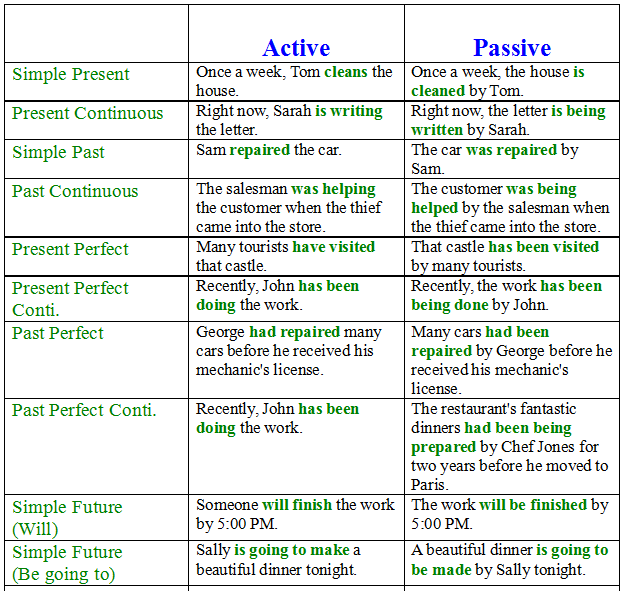GRAMMAR: ACTIVE AND PASSIVE FORMS
Active/Passive verb form
Sentences can be active or passive. Therefore, tenses also have "active forms" and "passive forms." You must learn to recognize the difference to successfully speak English.
Active Form
In active sentences, the thing doing the action is the subject of the sentence and the thing receiving the action is the object. Most sentences are active.
[Thing doing action] + [verb] + [thing receiving action]
Examples:

Passive Form
In passive sentences, the thing receiving the action is the subject of the sentence and the thing doing the action is optionally included near the end of the sentence. You can use the passive form if you think that the thing receiving the action is more important or should be emphasized. You can also use the passive form if you do not know who is doing the action or if you do not want to mention who is doing the action.
[Thing receiving action] + [be] + [past participle of verb] + [by] + [thing doing action]

Adapted from: http://www.englishpage.com/verbpage/activepassive.html
Active / Passive Overview

From: http://vietnamteaching.com/grammar/active-passive-verb-forms/
Is it always necessary to specify the agent? Sometimes we can leave it out. Watch the video:
http://www.bbc.co.uk/learningenglish/english/course/upper-intermediate/unit-6/session-1